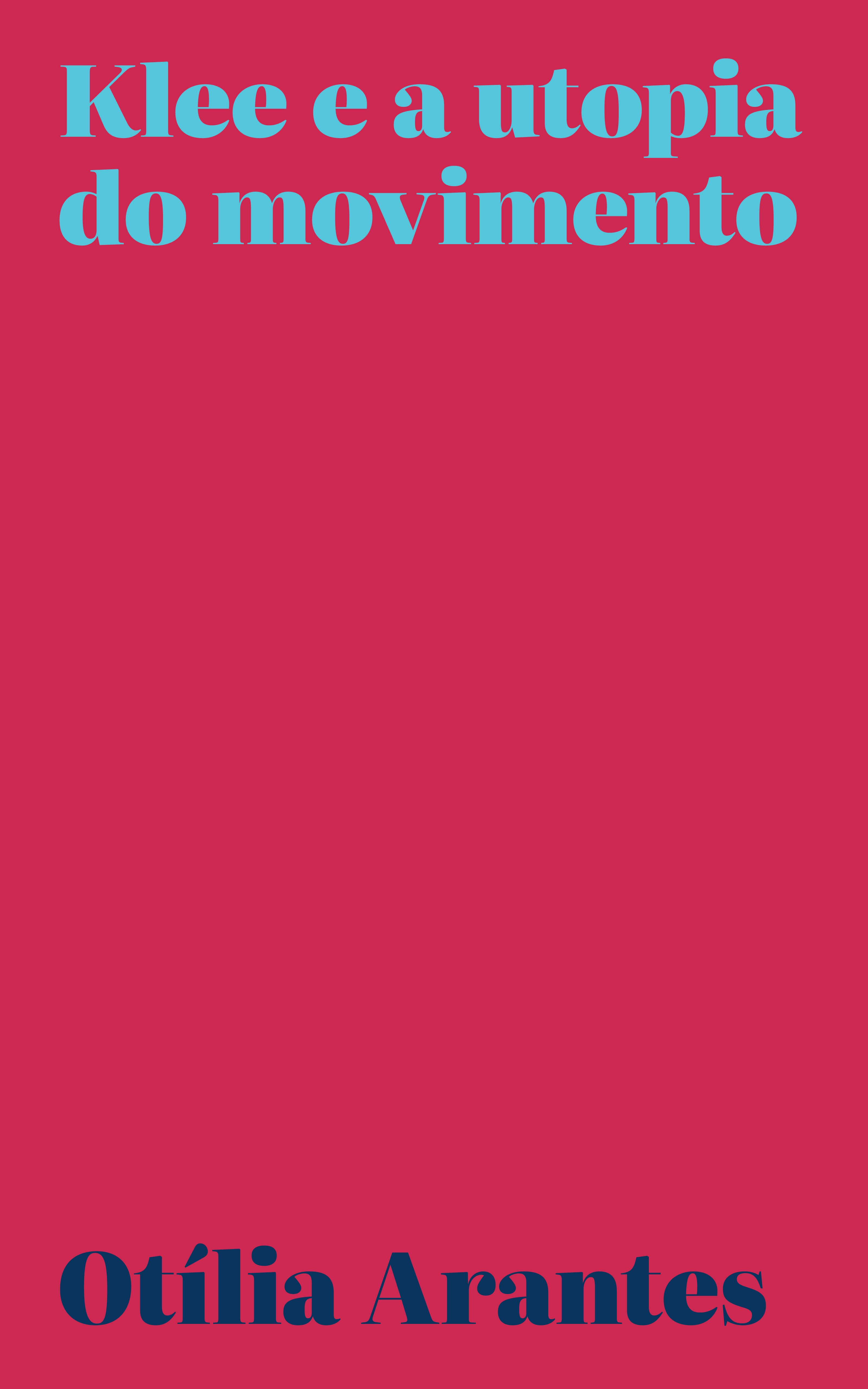Klee and the Utopia of Movement
1976
Synopsis
Published in Revista Discurso in 1976, Klee, the Utopia of Movement, an essay that essentially marked Otilia Arantes' debut upon her return from her doctoral studies in France, "steeped" in French Philosophy, as she stated in an interview, serves as a historical document of a particular moment in her critique—at the time, more focused on the visual arts. The text is, in fact, an extended commentary on Paul Klee's famous statement: "Art does not reproduce the visible; it makes visible": "A vision without a correlate, painting would retreat from the seen to seeing itself, from the objects that strike the eye and the forms that take shape there, to the eye itself and the act of seeing—from the constituted to the constituting, from meaning to the genesis of meanings. Through the absence of an object ('art... makes visible'), visual perception would gain precedence over the given world, and painting, no longer figurative, would achieve the status of a 'figured philosophy of vision'—as Merleau-Ponty defines it, making Klee the fortunate illustration of his theoretical formulations. However—and here Otília begins to distance herself from the Philosopher—the 'utopia of a purely dynamic work of art' pursued by Klee may not exactly correspond to the mere 'interweaving of vision and movement,' as read in L’Oeil et l’Esprit, that is, through simple contamination. To escape the pictorial tradition, subject to the despotism of sight and, therefore, to 'representation,' the painter proposes, in contrast, especially in his courses at the Bauhaus, a painting as 'pure movement,' drawing inspiration either from the movements of nature or from the arts of movement, such as music and dance—'motor-forms' capable of acting on the spectator in such a way as to transform their passive visual reception into a corporal and active one. According to Klee, moving from objects to sensations means transitioning from a knowledge of the eye to a knowledge (or sensation) of the body itself, abandoning pure understanding or reason in favor of sensuality, or something akin to 'desire,' not in the Freudian sense of Wunsch (which implies teleology, i.e., fulfillment), but as a productive force—the concept is from Jean-François Lyotard in Discours, Figure, who also uses Paul Klee as an example, and serves as a guide for the conclusions reached in the young Otília Arantes' essay."
Keywords: The Body, Desire, François Lyotard, Gesture, Line, Merleau-Ponty, Movement, Music, Nature, Sight, Paul Klee, Representation, Sensation, Vision.

Series
Categories
License

This work is licensed under a Creative Commons Attribution-NonCommercial-NoDerivatives 4.0 International License.


